
Counties most vulnerable to COVID-19 in every state
Counties most vulnerable to COVID-19 in every state
What creates vulnerability during a global pandemic? Why are certain populations more vulnerable than others? Since COVID-19 is a novel virus, meaning it is a virus that has not been recorded, there's a learning curve for both doctors and scientists, and often this means that they learn as they go. This is what is happening with COVID-19. Its classification as a novel virus alone makes everyone vulnerable as a society.
The lack of information and knowledge creates vulnerability, especially when it comes to previously identified vulnerable groups. These include rural populations that are located far from health care services or have a shrinking number of hospitals or primary care physicians; single-parent households battling economic hardship because they only have one income to rely on; the elderly who often have either health issues or compromised immune systems; and minority and disabled populations that often fight systemic inequalities.
Stacker compiled a list of the counties that are most vulnerable to COVID-19 in every state using the Surgo Foundation's COVID-19 Community Vulnerability Index (CCVI), which identifies communities more vulnerable to the pandemic. The CCVI defines "more vulnerable" communities as those that "have a limited ability to mitigate, treat, and delay transmission of a pandemic disease, and to reduce its economic and social impacts."
The index uses six themes, or groups of indicators. Four themes are adopted from the Centers for Disease Control and Prevention's (CDC) Social Vulnerability Index, which measures a community's resilience to all types of natural disaster from a sociodemographic perspective, and the remaining two themes—epidemiological factors and health care system factors—have been compiled by Surgo Foundation researchers specifically to address COVID-19.
The index's full methodology, including sources for all indicators, is available here. For both the overall CCVI score and the scores for individual themes, a higher value indicates a more vulnerable population. The data date is 2014–2018 and varies by indicator. The data was released in April.
In this story, Stacker lays out the CCVI scores for each state, as well as each state's two biggest areas of vulnerability, i.e., themes that received the highest scores, and the three counties in this state that have the highest vulnerability.
Read on to find out what makes certain counties and the groups that call them home especially vulnerable to COVID-19.
You may also like: How COVID-19 projections compare to leading causes of death in America
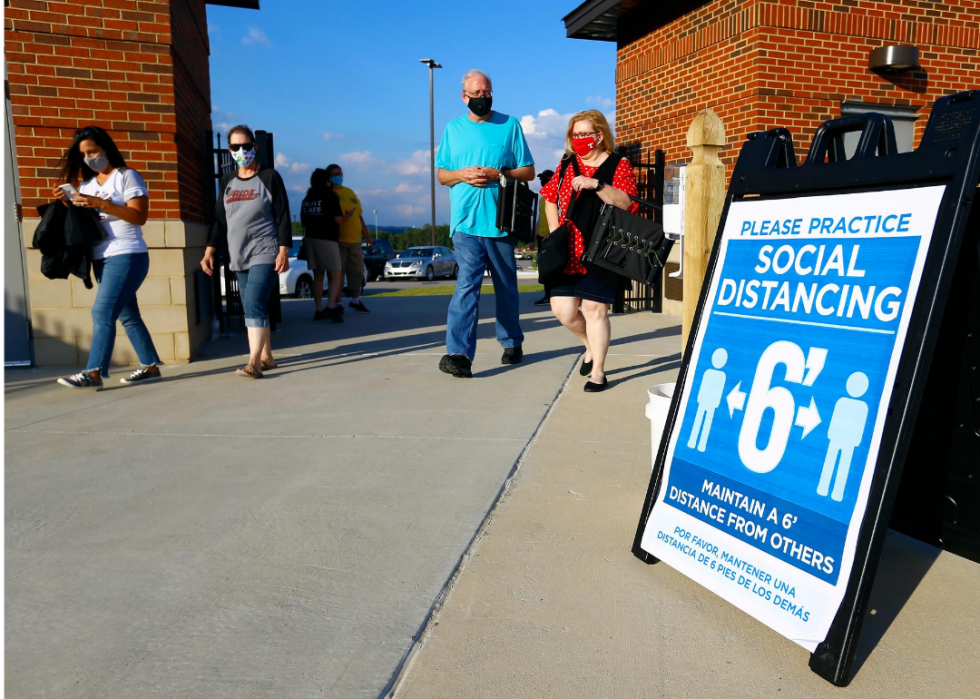
Alabama
- State overall CCVI score: 0.92 (#5 most vulnerable among all states)
--- #1 area of vulnerability (tie): Socioeconomic status (score: 0.92)
--- #1 area of vulnerability (tie): Health care system factors (score: 0.92)
- #1 most vulnerable county: Barbour County
--- County overall CCVI score: 0.99
--- #1 area of vulnerability: Socioeconomic status (score: 0.97)
--- #2 area of vulnerability: Health care system factors (score: 0.94)
- #2 most vulnerable county: Perry County
--- County overall CCVI score: 0.99
--- #1 area of vulnerability: Socioeconomic status (score: 0.99)
--- #2 area of vulnerability: Household composition and disability (score: 0.94)
- #3 most vulnerable county: Hale County
--- County overall CCVI score: 0.98
--- #1 area of vulnerability: Household composition and disability (score: 0.96)
--- #2 area of vulnerability: Health care system factors (score: 0.93)
Though downgraded to low-risk on Aug. 14, Barbour County still has a poverty rate that is more than double the nation’s, which makes for a highly vulnerable population. Perry County, the second most vulnerable county in Alabama, has the second-highest prevalence of diabetes of all counties in the state, which makes residents particularly vulnerable during the pandemic. Diabetes contributes to higher hospitalization rates in COVID-19 patients, more serious illness, and a higher risk of death.

Alaska
- State overall CCVI score: 0.60 (#20 most vulnerable among all states)
--- #1 area of vulnerability: Housing type and transportation (score: 0.98)
--- #2 area of vulnerability: Minority status and language (score: 0.60)
- #1 most vulnerable county: Kusilvak County
--- County overall CCVI score: 0.98
--- #1 area of vulnerability: Socioeconomic status (score: 1)
--- #2 area of vulnerability: Housing type and transportation (score: 1)
- #2 most vulnerable county: Dillingham County
--- County overall CCVI score: 0.95
--- #1 area of vulnerability: Housing type and transportation (score: 1)
--- #2 area of vulnerability: Minority status and language (score: 0.92)
- #3 most vulnerable county: Nome County
--- County overall CCVI score: 0.95
--- #1 area of vulnerability: Housing type and transportation (score: 1)
--- #2 area of vulnerability: Minority status and language (score: 0.93)
Across all three of the most vulnerable counties in Alaska, housing type and transportation is a major area of vulnerability. In Nome County, the average commute time to work is under 7 minutes, and many residents do not own cars, which can make it difficult during emergency situations in terms of travel to jobs, doctors offices, and hospitals.

Arizona
- State overall CCVI score: 0.54 (#23 most vulnerable among all states)
--- #1 area of vulnerability: Minority status and language (score: 0.84)
--- #2 area of vulnerability: Socioeconomic status (score: 0.70)
- #1 most vulnerable county: Apache County
--- County overall CCVI score: 0.99
--- #1 area of vulnerability: Minority status and language (score: 0.97)
--- #2 area of vulnerability: Socioeconomic status (score: 0.97)
- #2 most vulnerable county: Navajo County
--- County overall CCVI score: 0.85
--- #1 area of vulnerability: Socioeconomic status (score: 0.93)
--- #2 area of vulnerability: Minority status and language (score: 0.89)
- #3 most vulnerable county: Graham County
--- County overall CCVI score: 0.78
--- #1 area of vulnerability: Housing type and transportation (score: 0.91)
--- #2 area of vulnerability: Minority status and language (score: 0.90)
As of Aug. 10, Apache County has had a high infection rate, and the population remains highly vulnerable. Not only is there a high poverty rate in the county, but more than 54% of its residents do not speak English. This economic disadvantage and the communication barrier make residents particularly vulnerable to COVID-19.

Arkansas
- State overall CCVI score: 0.96 (#3 most vulnerable among all states)
--- #1 area of vulnerability: Household composition and disability (score: 0.98)
--- #2 area of vulnerability: Health care system factors (score: 0.94)
- #1 most vulnerable county: Chicot County
--- County overall CCVI score: 1
--- #1 area of vulnerability: Housing type and transportation (score: 0.97)
--- #2 area of vulnerability: Health care system factors (score: 0.95)
- #2 most vulnerable county: Desha County
--- County overall CCVI score: 0.99
--- #1 area of vulnerability: Socioeconomic status (score: 0.97)
--- #2 area of vulnerability: Household composition and disability (score: 0.96)
- #3 most vulnerable county: Phillips County
--- County overall CCVI score: 0.99
--- #1 area of vulnerability: Household composition and disability (score: 1)
--- #2 area of vulnerability: Socioeconomic status (score: 0.97)
On July 29, Chicot County wound up with the highest number of new cases due to an outbreak of the coronavirus at a local correctional facility. In the same month, the CDC labeled the county an area of concern. Vulnerabilities are also found in 67.5% of homes where grandparents are the primary caregivers, while another 54% of homes are run by single parents.

California
- State overall CCVI score: 0.14 (#8 least vulnerable among all states)
--- #1 area of vulnerability: Minority status and language (score: 1)
--- #2 area of vulnerability: Housing type and transportation (score: 0.86)
- #1 most vulnerable county: Lake County
--- County overall CCVI score: 0.81
--- #1 area of vulnerability: Housing type and transportation (score: 0.91)
--- #2 area of vulnerability: Minority status and language (score: 0.86)
- #2 most vulnerable county: Trinity County
--- County overall CCVI score: 0.66
--- #1 area of vulnerability: Housing type and transportation (score: 0.93)
--- #2 area of vulnerability: Household composition and disability (score: 0.89)
- #3 most vulnerable county: Glenn County
--- County overall CCVI score: 0.64
--- #1 area of vulnerability: Minority status and language (score: 0.97)
--- #2 area of vulnerability: Socioeconomic status (score: 0.88)
As of Aug. 14, Glenn County is on the state's COVID-19 watchlist for failing to meet several criteria. With a citizenship rate lower than the national average of 93.2% and a significant Latino population, the county's #3 vulnerability ranking and findings support how hard the pandemic has hit minority populations.
You may also like: State and federal rental laws affected by the coronavirus

Colorado
- State overall CCVI score: 0.10 (#6 least vulnerable among all states)
--- #1 area of vulnerability: Minority status and language (score: 0.62)
--- #2 area of vulnerability: Health care system factors (score: 0.52)
- #1 most vulnerable county: Morgan County
--- County overall CCVI score: 0.90
--- #1 area of vulnerability: Minority status and language (score: 0.94)
--- #2 area of vulnerability: Housing type and transportation (score: 0.84)
- #2 most vulnerable county: Logan County
--- County overall CCVI score: 0.87
--- #1 area of vulnerability: Housing type and transportation (score: 0.95)
--- #2 area of vulnerability: Epidemiological factors (score: 0.94)
- #3 most vulnerable county: Bent County
--- County overall CCVI score: 0.86
--- #1 area of vulnerability: Housing type and transportation (score: 0.98)
--- #2 area of vulnerability: Socioeconomic status (score: 0.93)
Logan County has the highest prevalence of adult obesity of all counties in the state, while Morgan County closely follows. According to the CDC, obese people are at an increased risk of developing severe illness due to COVID-19.
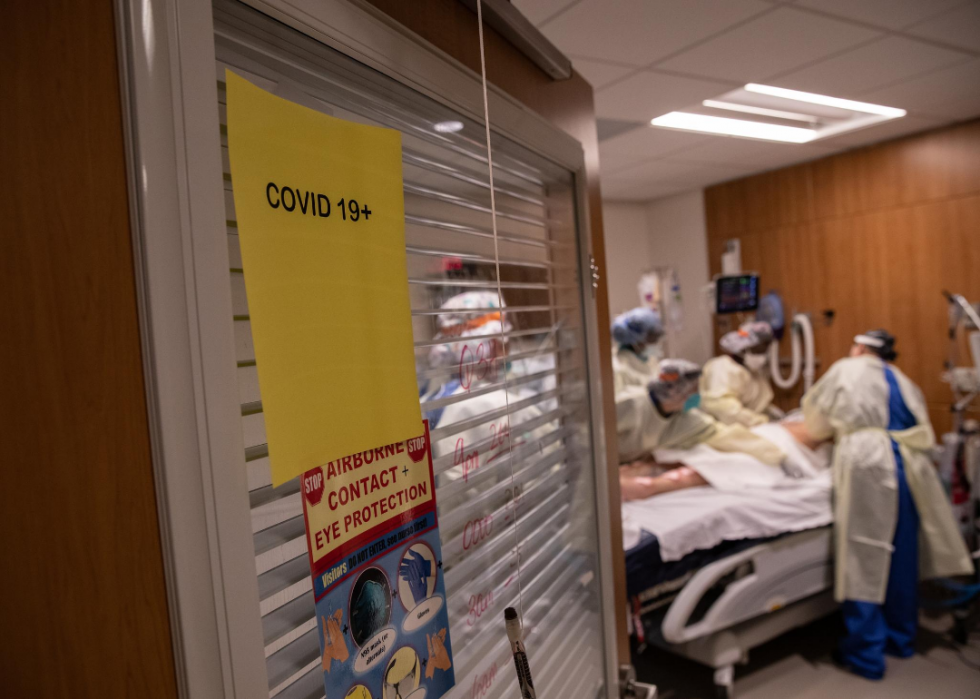
Connecticut
- State overall CCVI score: 0.30 (#16 least vulnerable among all states)
--- #1 area of vulnerability: Minority status and language (score: 0.70)
--- #2 area of vulnerability: Health care system factors (score: 0.66)
- #1 most vulnerable county: Fairfield County
--- County overall CCVI score: 0.34
--- #1 area of vulnerability: Minority status and language (score: 0.86)
--- #2 area of vulnerability: Epidemiological factors (score: 0.57)
- #2 most vulnerable county: New Haven County
--- County overall CCVI score: 0.33
--- #1 area of vulnerability: Minority status and language (score: 0.83)
--- #2 area of vulnerability: Health care system factors (score: 0.64)
- #3 most vulnerable county: Hartford County
--- County overall CCVI score: 0.25
--- #1 area of vulnerability: Minority status and language (score: 0.84)
--- #2 area of vulnerability: Health care system factors (score: 0.45)
Fairfield County had the highest number of COVID-19 cases of any county in Connecticut as of Aug. 10. The county is in close proximity to New York City, where since the beginning of the pandemic there have been at least 433,881 cases and 32,464 deaths, according to the New York Times. While New Haven County is in the midst of not only a significant number of COVID-19 cases, it is also experiencing a rise in the number of drug overdose deaths.

Delaware
- State overall CCVI score: 0.58 (#21 most vulnerable among all states)
--- #1 area of vulnerability: Epidemiological factors (score: 0.82)
--- #2 area of vulnerability: Minority status and language (score: 0.72)
- #1 most vulnerable county: Kent County
--- County overall CCVI score: 0.61
--- #1 area of vulnerability: Minority status and language (score: 0.79)
--- #2 area of vulnerability: Health care system factors (score: 0.65)
- #2 most vulnerable county: Sussex County
--- County overall CCVI score: 0.53
--- #1 area of vulnerability: Epidemiological factors (score: 0.87)
--- #2 area of vulnerability: Minority status and language (score: 0.68)
- #3 most vulnerable county: New Castle County
--- County overall CCVI score: 0.24
--- #1 area of vulnerability: Minority status and language (score: 0.83)
--- #2 area of vulnerability: Epidemiological factors (score: 0.72)
Though New Castle County has a high percentage of white residents, COVID-19 cases are highest among Latino and Black populations, supporting the disproportionate effects of the pandemic on minority groups. All three of Delaware’s most vulnerable counties also rank highest in the state for both diabetes and obesity.

Florida
- State overall CCVI score: 0.34 (#18 least vulnerable among all states)
--- #1 area of vulnerability: Minority status and language (score: 0.88)
--- #2 area of vulnerability: Socioeconomic status (score: 0.68)
- #1 most vulnerable county: Hamilton County
--- County overall CCVI score: 0.92
--- #1 area of vulnerability: Socioeconomic status (score: 0.99)
--- #2 area of vulnerability: Housing type and transportation (score: 0.99)
- #2 most vulnerable county: Hendry County
--- County overall CCVI score: 0.91
--- #1 area of vulnerability: Minority status and language (score: 0.99)
--- #2 area of vulnerability: Housing type and transportation (score: 0.99)
- #3 most vulnerable county: Gadsden County
--- County overall CCVI score: 0.88
--- #1 area of vulnerability: Minority status and language (score: 0.92)
--- #2 area of vulnerability: Socioeconomic status (score: 0.90)
With 27.6% of the population living below the poverty line, a number double the national average, and the hardships COVID-19 poses to low-income populations, it is understandable that residents of Hamilton County have an increased vulnerability during the pandemic. Not only are the poorest communities often underinsured, but they also often have little to no access to high-quality health care.
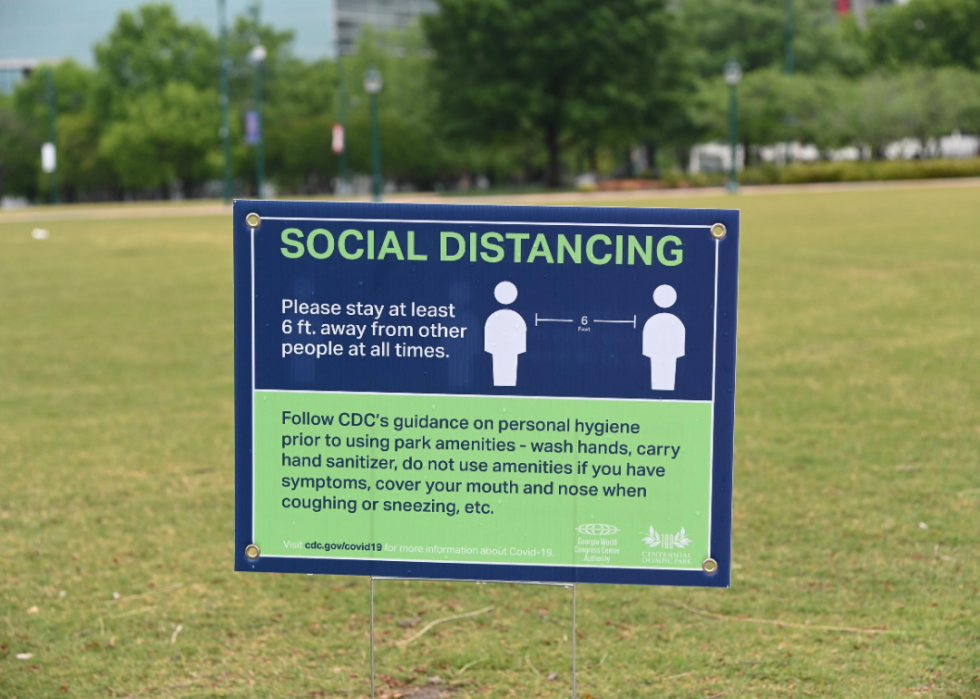
Georgia
- State overall CCVI score: 0.68 (#17 most vulnerable among all states)
--- #1 area of vulnerability: Socioeconomic status (score: 0.84)
--- #2 area of vulnerability: Minority status and language (score: 0.78)
- #1 most vulnerable county: Clay County
--- County overall CCVI score: 1
--- #1 area of vulnerability: Socioeconomic status (score: 1)
--- #2 area of vulnerability: Housing type and transportation (score: 0.99)
- #2 most vulnerable county: Randolph County
--- County overall CCVI score: 0.99
--- #1 area of vulnerability: Household composition and disability (score: 0.99)
--- #2 area of vulnerability: Housing type and transportation (score: 0.97)
- #3 most vulnerable county: Quitman County
--- County overall CCVI score: 0.99
--- #1 area of vulnerability: Socioeconomic status (score: 0.98)
--- #2 area of vulnerability: Household composition and disability (score: 0.97)
A highly impoverished community—61.5% of it comprises Black individuals—Randolph County is especially vulnerable to COVID-19. With many residents living in mobile homes, at more than double the state and national rate, this leaves less space for social distancing and possibilities for overcrowding, which present an increased risk of getting sick, according to the World Health Organization.
You may also like: What are contact tracers? And how many each state needs to safely reopen

Hawaii
- State overall CCVI score: 0.78 (#12 most vulnerable among all states)
--- #1 area of vulnerability: Minority status and language (score: 0.98)
--- #2 area of vulnerability: Housing type and transportation (score: 0.78)
- #1 most vulnerable county: Hawaii County
--- County overall CCVI score: 0.54
--- #1 area of vulnerability: Minority status and language (score: 0.94)
--- #2 area of vulnerability: Health care system factors (score: 0.46)
- #2 most vulnerable county: Honolulu County
--- County overall CCVI score: 0.54
--- #1 area of vulnerability: Minority status and language (score: 0.97)
--- #2 area of vulnerability: Epidemiological factors (score: 0.71)
- #3 most vulnerable county: Kauai County
--- County overall CCVI score: 0.44
--- #1 area of vulnerability: Minority status and language (score: 0.96)
--- #2 area of vulnerability: Housing type and transportation (score: 0.52)
COVID-19 has hit Honolulu County harder than any county in the state. The county also has the second-highest prevalence in the state for diabetes and the third for obesity, both conditions that seriously impact the effects the coronavirus has on patients.

Idaho
- State overall CCVI score: 0.44 (#23 least vulnerable among all states)
--- #1 area of vulnerability: Health care system factors (score: 0.80)
--- #2 area of vulnerability: Household composition and disability (score: 0.78)
- #1 most vulnerable county: Clark County
--- County overall CCVI score: 1
--- #1 area of vulnerability: Minority status and language (score: 0.99)
--- #2 area of vulnerability: Socioeconomic status (score: 0.98)
- #2 most vulnerable county: Washington County
--- County overall CCVI score: 0.96
--- #1 area of vulnerability: Household composition and disability (score: 1)
--- #2 area of vulnerability: Epidemiological factors (score: 0.89)
- #3 most vulnerable county: Lincoln County
--- County overall CCVI score: 0.93
--- #1 area of vulnerability: Minority status and language (score: 0.94)
--- #2 area of vulnerability: Housing type and transportation (score: 0.84)
A median household income about half that of the national median household income and a high percentage of uninsured people under 65—27.2% compared to the 11.1% recorded in 2018 by the CDC—make Clark County especially vulnerable to COVID-19. The county also has low U.S. citizenship rates.
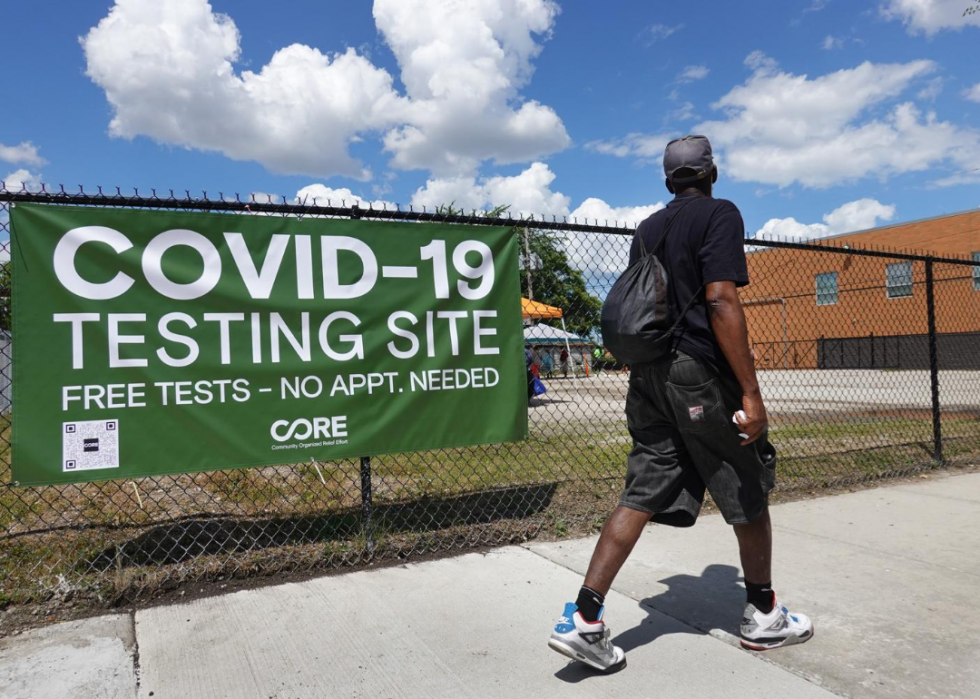
Illinois
- State overall CCVI score: 0.52 (#24 most vulnerable among all states)
--- #1 area of vulnerability: Epidemiological factors (score: 0.80)
--- #2 area of vulnerability: Minority status and language (score: 0.74)
- #1 most vulnerable county: Alexander County
--- County overall CCVI score: 0.87
--- #1 area of vulnerability: Household composition and disability (score: 0.92)
--- #2 area of vulnerability: Socioeconomic status (score: 0.91)
- #2 most vulnerable county: Pulaski County
--- County overall CCVI score: 0.87
--- #1 area of vulnerability: Epidemiological factors (score: 0.91)
--- #2 area of vulnerability: Socioeconomic status (score: 0.91)
- #3 most vulnerable county: Franklin County
--- County overall CCVI score: 0.82
--- #1 area of vulnerability: Epidemiological factors (score: 0.98)
--- #2 area of vulnerability: Household composition and disability (score: 0.94)
The population of Pulaski County remains high risk due to a large percentage of its residents living in poverty and its low median household income in comparison to the rest of the country. With a high prevalence of smoking, Pulaski County also has a high cardiovascular disease mortality rate. This is especially troubling given the link between COVID-19 and cardiovascular disease.
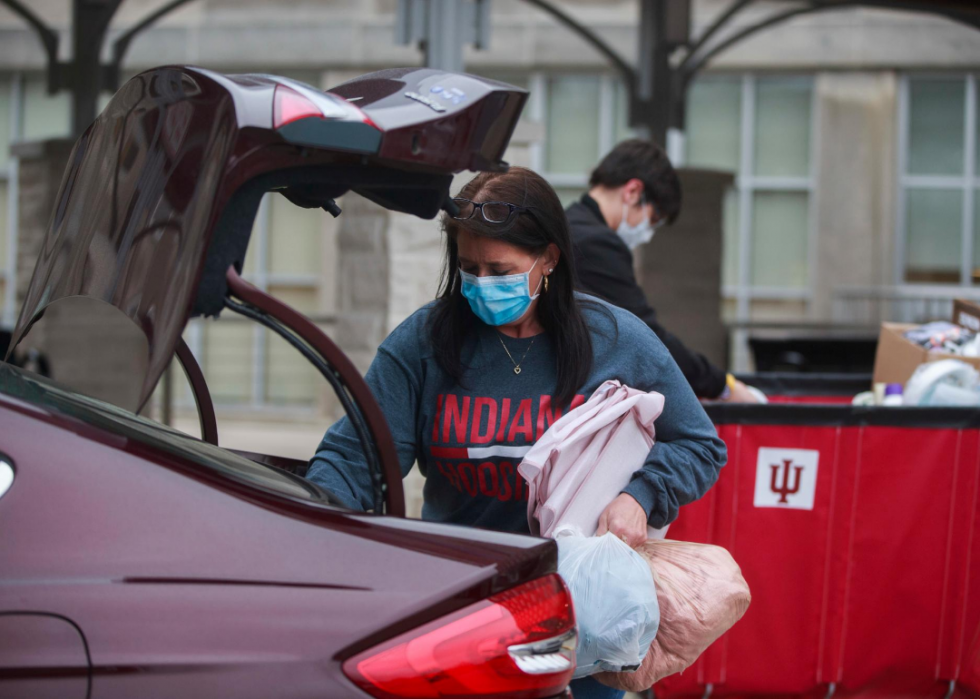
Indiana
- State overall CCVI score: 0.70 (#16 most vulnerable among all states)
--- #1 area of vulnerability: Household composition and disability (score: 0.76)
--- #2 area of vulnerability: Epidemiological factors (score: 0.74)
- #1 most vulnerable county: Lake County
--- County overall CCVI score: 0.77
--- #1 area of vulnerability: Epidemiological factors (score: 0.87)
--- #2 area of vulnerability: Health care system factors (score: 0.85)
- #2 most vulnerable county: Grant County
--- County overall CCVI score: 0.74
--- #1 area of vulnerability: Health care system factors (score: 0.86)
--- #2 area of vulnerability: Epidemiological factors (score: 0.74)
- #3 most vulnerable county: Jay County
--- County overall CCVI score: 0.74
--- #1 area of vulnerability: Household composition and disability (score: 0.92)
--- #2 area of vulnerability: Health care system factors (score: 0.73)
Though Grant County has a small number of cases and deaths as compared to the rest of Indiana, the state of public health was dire well before the pandemic due to factors such as excessive smoking, less access to healthy foods, and unhealthy lifestyle choices. Grant County currently has the highest prevalence of diabetes across the state, and the link between diabetes and the coronavirus is well-documented.

Iowa
- State overall CCVI score: 0.50 (#25 most vulnerable among all states)
--- #1 area of vulnerability: Health care system factors (score: 0.74)
--- #2 area of vulnerability: Household composition and disability (score: 0.60)
- #1 most vulnerable county: Crawford County
--- County overall CCVI score: 0.76
--- #1 area of vulnerability: Minority status and language (score: 0.85)
--- #2 area of vulnerability: Household composition and disability (score: 0.72)
- #2 most vulnerable county: Marshall County
--- County overall CCVI score: 0.72
--- #1 area of vulnerability: Epidemiological factors (score: 0.86)
--- #2 area of vulnerability: Minority status and language (score: 0.85)
- #3 most vulnerable county: Montgomery County
--- County overall CCVI score: 0.71
--- #1 area of vulnerability: Household composition and disability (score: 0.91)
--- #2 area of vulnerability: Epidemiological factors (score: 0.82)
In Montgomery County, the board of health has advised people to avoid mass gatherings. With high vulnerability scores for both household composition and disability, as well as epidemiological factors such as high diabetes and obesity prevalence rates, it should be considered sage advice.
You may also like: How the CDC's handling of COVID-19 impacted American public health

Kansas
- State overall CCVI score: 0.72 (#15 most vulnerable among all states)
--- #1 area of vulnerability: Health care system factors (score: 0.78)
--- #2 area of vulnerability: Household composition and disability (score: 0.70)
- #1 most vulnerable county: Chautauqua County
--- County overall CCVI score: 0.92
--- #1 area of vulnerability: Housing type and transportation (score: 0.98)
--- #2 area of vulnerability: Household composition and disability (score: 0.97)
- #2 most vulnerable county: Greeley County
--- County overall CCVI score: 0.88
--- #1 area of vulnerability: Household composition and disability (score: 0.97)
--- #2 area of vulnerability: Housing type and transportation (score: 0.95)
- #3 most vulnerable county: Ford County
--- County overall CCVI score: 0.87
--- #1 area of vulnerability: Minority status and language (score: 0.98)
--- #2 area of vulnerability: Housing type and transportation (score: 0.97)
With a high percentage of elderly residents, Chautauqua County is especially vulnerable to COVID-19. Ford County also has a population that is greatly impacted by the virus. Nearly half its residents are Hispanic and while this population has been hit hard by the virus, information from the CDC found that Black and Hispanic children had higher cumulative rates of COVID-19–associated hospitalizations.
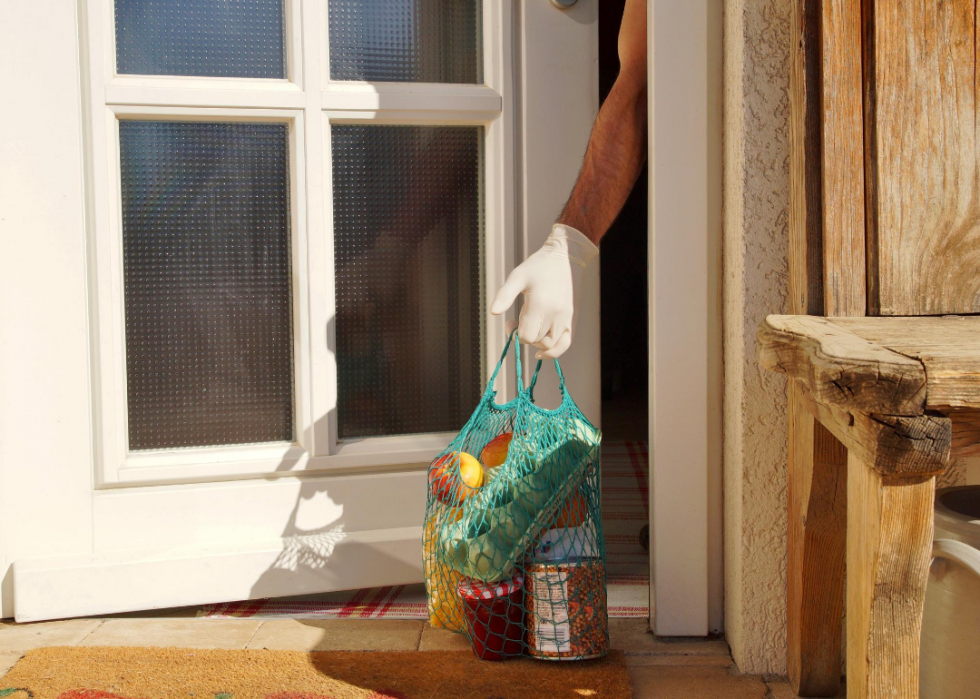
Kentucky
- State overall CCVI score: 0.80 (#11 most vulnerable among all states)
--- #1 area of vulnerability (tie): Household composition and disability (score: 0.90)
--- #1 area of vulnerability (tie): Epidemiological factors (score: 0.90)
- #1 most vulnerable county: Fulton County
--- County overall CCVI score: 0.99
--- #1 area of vulnerability: Household composition and disability (score: 0.99)
--- #2 area of vulnerability: Socioeconomic status (score: 0.95)
- #2 most vulnerable county: Clay County
--- County overall CCVI score: 0.95
--- #1 area of vulnerability: Socioeconomic status (score: 0.99)
--- #2 area of vulnerability: Housing type and transportation (score: 0.95)
- #3 most vulnerable county: Perry County
--- County overall CCVI score: 0.95
--- #1 area of vulnerability: Socioeconomic status (score: 0.97)
--- #2 area of vulnerability: Housing type and transportation (score: 0.95)
Perry County has a high percentage of disabled people under 65. People with disabilities are particularly vulnerable during the COVID-19 pandemic for several reasons, including the potential inability to access proper hygiene measures and to properly exercise social distancing. Both Perry and Fulton counties also have low household incomes in comparison to the U.S. median and a high percentage of people living at or below the poverty line.
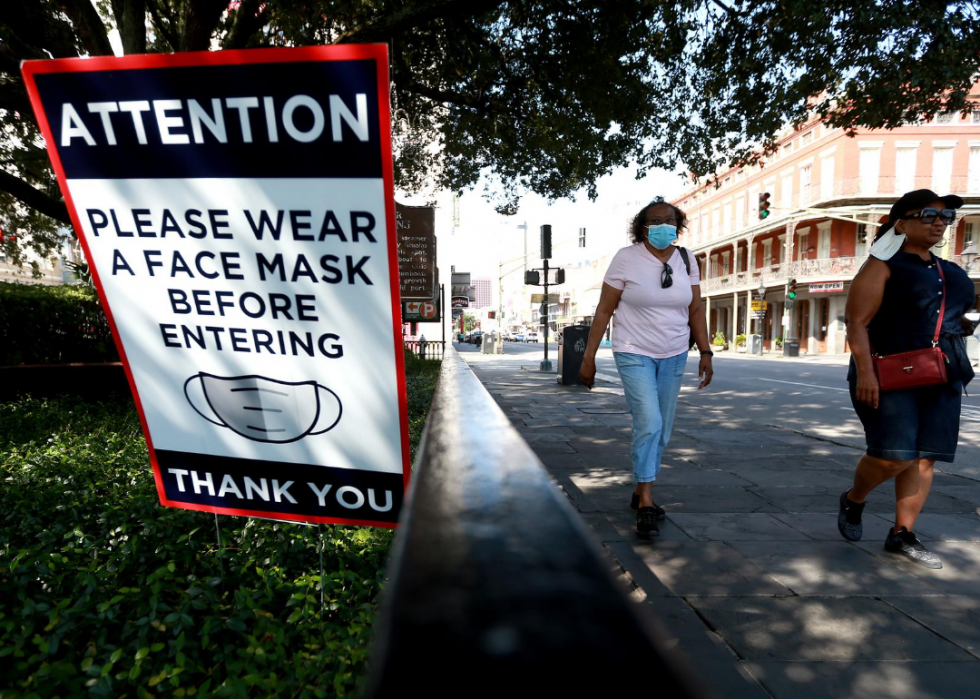
Louisiana
- State overall CCVI score: 0.98 (#2 most vulnerable among all states)
--- #1 area of vulnerability: Epidemiological factors (score: 0.98)
--- #2 area of vulnerability: Socioeconomic status (score: 0.94)
- #1 most vulnerable county: St. Helena Parish
--- County overall CCVI score: 0.99
--- #1 area of vulnerability: Socioeconomic status (score: 0.96)
--- #2 area of vulnerability: Household composition and disability (score: 0.95)
- #2 most vulnerable county: Evangeline Parish
--- County overall CCVI score: 0.98
--- #1 area of vulnerability: Socioeconomic status (score: 0.98)
--- #2 area of vulnerability: Household composition and disability (score: 0.97)
- #3 most vulnerable county: Washington Parish
--- County overall CCVI score: 0.98
--- #1 area of vulnerability: Socioeconomic status (score: 0.95)
--- #2 area of vulnerability: Epidemiological factors (score: 0.93)
All three of the most vulnerable parishes in Louisiana have high levels of poverty and it’s been proven that COVID-19 has a more profound impact on the nation’s poor. The pandemic is shining a glaring light on long present racial and economic inequities. Neighborhood-based COVID-19 tests are now available to residents of Evangeline Parish.

Maine
- State overall CCVI score: 0.04 (#3 least vulnerable among all states)
--- #1 area of vulnerability (tie): Household composition and disability (score: 0.72)
--- #1 area of vulnerability (tie): Housing type and transportation (score: 0.72)
- #1 most vulnerable county: Washington County
--- County overall CCVI score: 0.80
--- #1 area of vulnerability: Epidemiological factors (score: 0.90)
--- #2 area of vulnerability: Household composition and disability (score: 0.87)
- #2 most vulnerable county: Aroostook County
--- County overall CCVI score: 0.54
--- #1 area of vulnerability: Housing type and transportation (score: 0.73)
--- #2 area of vulnerability: Household composition and disability (score: 0.72)
- #3 most vulnerable county: Piscataquis County
--- County overall CCVI score: 0.49
--- #1 area of vulnerability: Household composition and disability (score: 0.88)
--- #2 area of vulnerability: Socioeconomic status (score: 0.70)
The three Maine counties that are most vulnerable to COVID-19 share a significant number of residents 65 and older. The elderly have a heightened risk of both serious illness due to the virus and death. Washington County also suffers not only with high levels of poverty, but also with opioid abuse, which makes this population vulnerable, especially with the surge of opioid deaths during the pandemic.
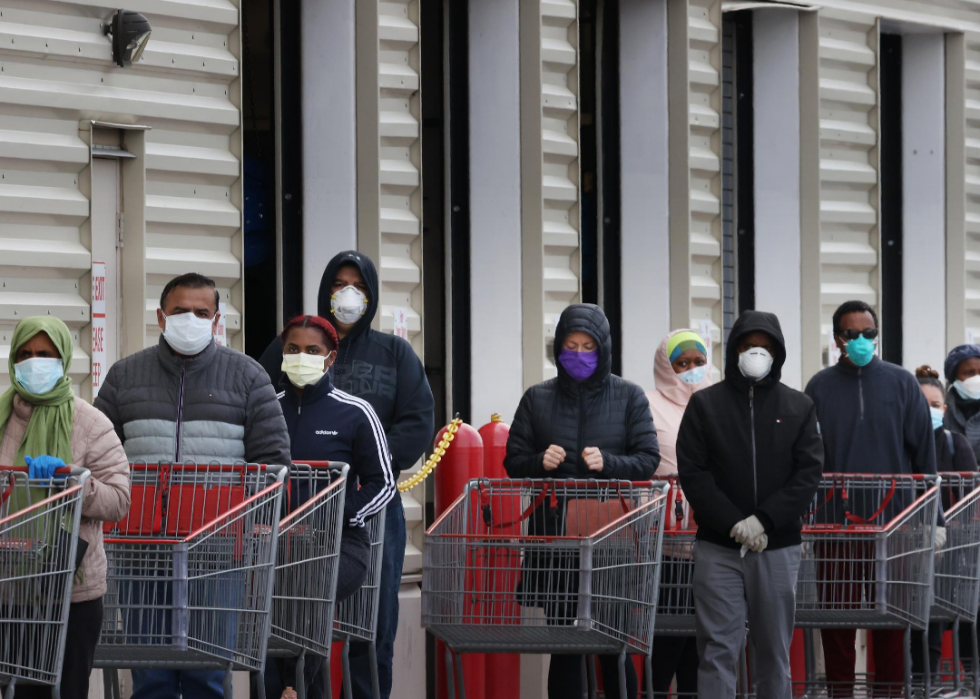
Maryland
- State overall CCVI score: 0.42 (#22 least vulnerable among all states)
--- #1 area of vulnerability: Minority status and language (score: 0.80)
--- #2 area of vulnerability: Epidemiological factors (score: 0.70)
- #1 most vulnerable county: Baltimore City County
--- County overall CCVI score: 0.76
--- #1 area of vulnerability: Epidemiological factors (score: 0.99)
--- #2 area of vulnerability: Minority status and language (score: 0.87)
- #2 most vulnerable county: Caroline County
--- County overall CCVI score: 0.70
--- #1 area of vulnerability: Household composition and disability (score: 0.65)
--- #2 area of vulnerability: Health care system factors (score: 0.63)
- #3 most vulnerable county: Dorchester County
--- County overall CCVI score: 0.63
--- #1 area of vulnerability: Minority status and language (score: 0.79)
--- #2 area of vulnerability: Household composition and disability (score: 0.71)
According to the Federal Reserve Bank of St. Louis, Caroline and Dorchester counties have some of the highest rates of single-parent households in the state. Single-parents are particularly vulnerable to the impact of COVID-19, not because of an increased risk of catching or dying from the virus, but rather due to the economic impact the virus has on these households.
You may also like: How can I stay safe while grocery shopping? And answers to 24 other coronavirus questions
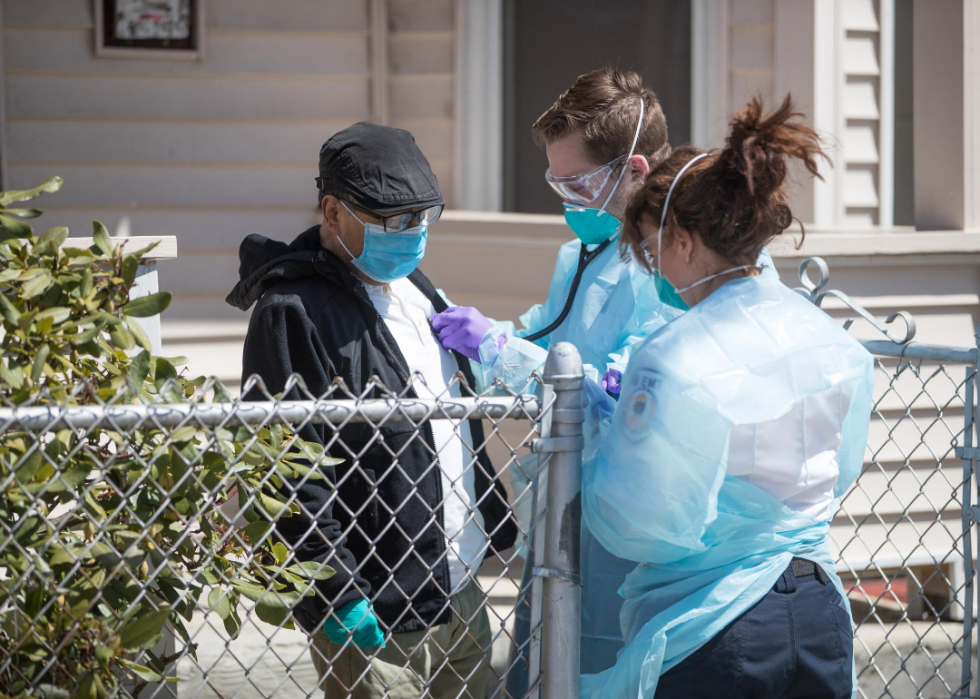
Massachusetts
- State overall CCVI score: 0.38 (#20 least vulnerable among all states)
--- #1 area of vulnerability: Epidemiological factors (score: 0.72)
--- #2 area of vulnerability: Minority status and language (score: 0.64)
- #1 most vulnerable county: Hampden County
--- County overall CCVI score: 0.52
--- #1 area of vulnerability: Minority status and language (score: 0.85)
--- #2 area of vulnerability: Health care system factors (score: 0.49)
- #2 most vulnerable county: Franklin County
--- County overall CCVI score: 0.46
--- #1 area of vulnerability: Epidemiological factors (score: 0.98)
--- #2 area of vulnerability: Minority status and language (score: 0.43)
- #3 most vulnerable county: Suffolk County
--- County overall CCVI score: 0.41
--- #1 area of vulnerability: Minority status and language (score: 0.96)
--- #2 area of vulnerability: Housing type and transportation (score: 0.85)
While the diversity in Suffolk County makes it an interesting place to live, the COVID-19 pandemic has been difficult for the significant minority population. It has also created a barrier for non-English speaking residents. A high percentage of Suffolk County residents take public transportation and live in multi-unit housing, more than double the rate of the United States, which can lead to conditions that are unfavorable for social distancing.
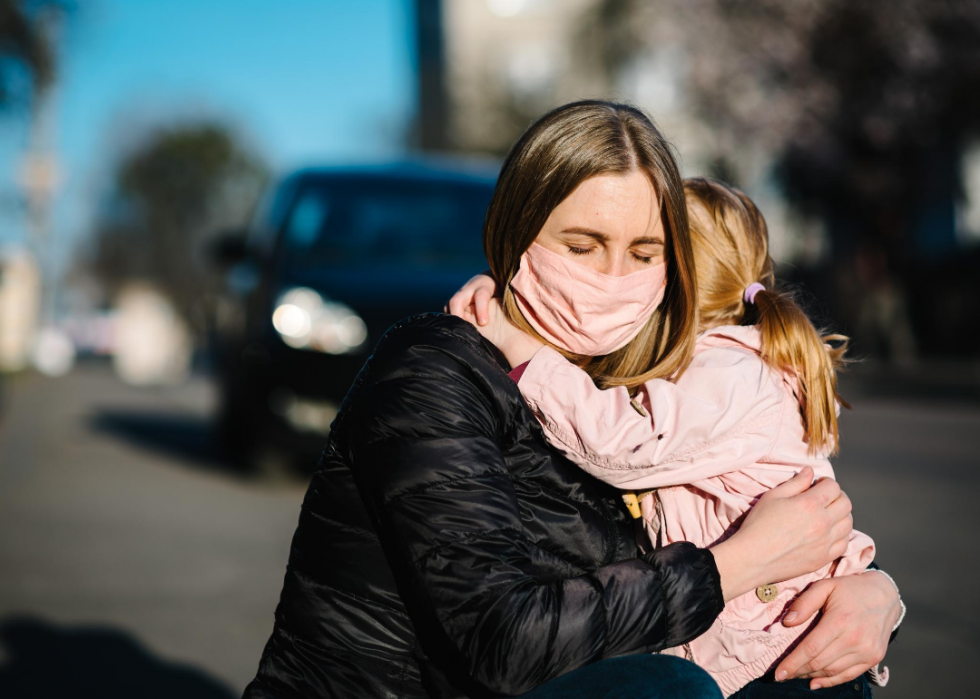
Michigan
- State overall CCVI score: 0.56 (#22 most vulnerable among all states)
--- #1 area of vulnerability (tie): Household composition and disability (score: 0.64)
--- #1 area of vulnerability (tie): Epidemiological factors (score: 0.64)
- #1 most vulnerable county: Lake County
--- County overall CCVI score: 0.86
--- #1 area of vulnerability: Socioeconomic status (score: 0.97)
--- #2 area of vulnerability: Epidemiological factors (score: 0.80)
- #2 most vulnerable county: Arenac County
--- County overall CCVI score: 0.80
--- #1 area of vulnerability: Socioeconomic status (score: 0.84)
--- #2 area of vulnerability: Epidemiological factors (score: 0.82)
- #3 most vulnerable county: Oceana County
--- County overall CCVI score: 0.79
--- #1 area of vulnerability: Housing type and transportation (score: 0.95)
--- #2 area of vulnerability: Household composition and disability (score: 0.87)
While Lake County still has very few active cases of COVID-19, it is the staggering rate of childhood poverty that makes this county particularly vulnerable to the virus. Lake County also has one of the highest suicide rates in Michigan, and the COVID-19 crisis presents an increase in suicide risk to the state.

Minnesota
- State overall CCVI score: 0.12 (#7 least vulnerable among all states)
--- #1 area of vulnerability: Health care system factors (score: 0.68)
--- #2 area of vulnerability: Housing type and transportation (score: 0.64)
- #1 most vulnerable county: Mahnomen County
--- County overall CCVI score: 0.95
--- #1 area of vulnerability: Household composition and disability (score: 0.99)
--- #2 area of vulnerability: Housing type and transportation (score: 0.98)
- #2 most vulnerable county: Todd County
--- County overall CCVI score: 0.81
--- #1 area of vulnerability: Housing type and transportation (score: 0.89)
--- #2 area of vulnerability: Epidemiological factors (score: 0.85)
- #3 most vulnerable county: Benton County
--- County overall CCVI score: 0.68
--- #1 area of vulnerability: Epidemiological factors (score: 0.88)
--- #2 area of vulnerability: Housing type and transportation (score: 0.87)
Mahnomen County, the poorest county in the state, also has a high percentage of single-parent households. Both of these things are difficult on their own, but when paired with a pandemic, the population becomes even more vulnerable. The county has also been plagued with an uptick in drug overdose deaths.

Mississippi
- State overall CCVI score: 1 (#1 most vulnerable among all states)
--- #1 area of vulnerability (tie): Socioeconomic status (score: 1)
--- #1 area of vulnerability (tie): Household composition and disability (score: 1)
- #1 most vulnerable county: Quitman County
--- County overall CCVI score: 1
--- #1 area of vulnerability: Socioeconomic status (score: 1)
--- #2 area of vulnerability: Health care system factors (score: 0.99)
- #2 most vulnerable county: Humphreys County
--- County overall CCVI score: 1
--- #1 area of vulnerability: Socioeconomic status (score: 1)
--- #2 area of vulnerability: Household composition and disability (score: 0.99)
- #3 most vulnerable county: Tunica County
--- County overall CCVI score: 1
--- #1 area of vulnerability: Housing type and transportation (score: 0.98)
--- #2 area of vulnerability: Epidemiological factors (score: 0.94)
Humphreys County has a primarily minority population, many of whom live below the poverty line, which makes COVID-19 a particularly crippling threat to residents. Additional vulnerability comes from a significant percentage of homes being located in a flood zone. Overcrowding is also an issue, and this particular threat is especially troubling given the importance of social distancing in fighting the virus.
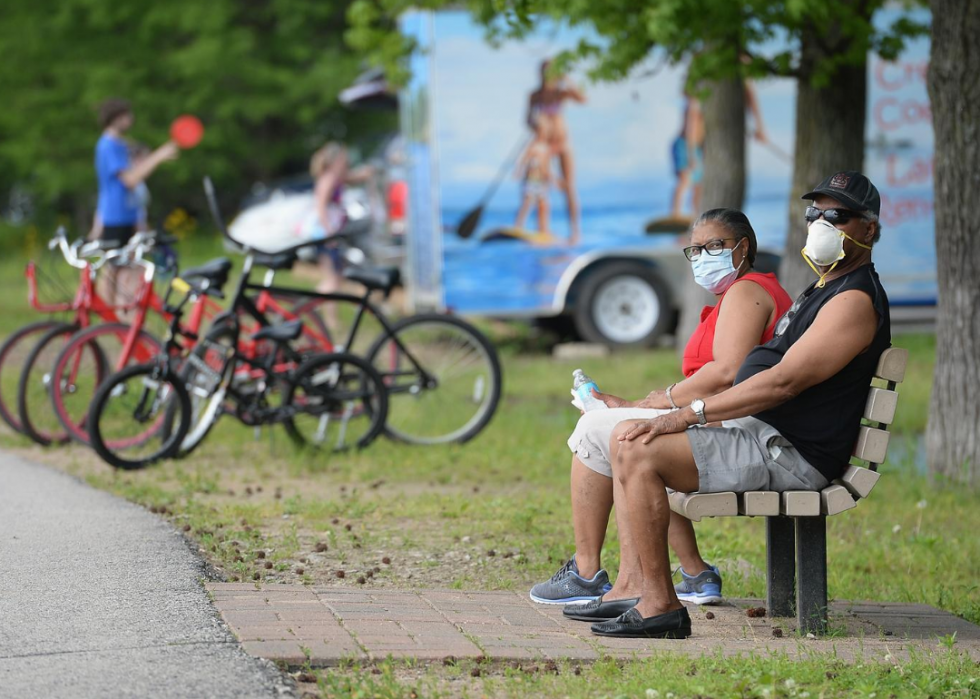
Missouri
- State overall CCVI score: 0.74 (#14 most vulnerable among all states)
--- #1 area of vulnerability: Household composition and disability (score: 0.80)
--- #2 area of vulnerability: Epidemiological factors (score: 0.78)
- #1 most vulnerable county: Pemiscot County
--- County overall CCVI score: 0.97
--- #1 area of vulnerability: Household composition and disability (score: 0.99)
--- #2 area of vulnerability: Health care system factors (score: 0.96)
- #2 most vulnerable county: New Madrid County
--- County overall CCVI score: 0.96
--- #1 area of vulnerability: Household composition and disability (score: 0.99)
--- #2 area of vulnerability: Health care system factors (score: 0.95)
- #3 most vulnerable county: Lawrence County
--- County overall CCVI score: 0.95
--- #1 area of vulnerability: Epidemiological factors (score: 0.94)
--- #2 area of vulnerability: Household composition and disability (score: 0.89)
With many residents living below the poverty line in Pemiscot County, childhood food insecurity is also an issue. As unemployment rates rose due to COVID-19, communities already struggling with food insecurity felt the impact.
You may also like: How the most common jobs in America are impacted by COVID-19

Montana
- State overall CCVI score: 0.26 (#14 least vulnerable among all states)
--- #1 area of vulnerability: Housing type and transportation (score: 0.88)
--- #2 area of vulnerability: Health care system factors (score: 0.72)
- #1 most vulnerable county: Glacier County
--- County overall CCVI score: 0.89
--- #1 area of vulnerability: Housing type and transportation (score: 0.98)
--- #2 area of vulnerability: Health care system factors (score: 0.92)
- #2 most vulnerable county: Blaine County
--- County overall CCVI score: 0.88
--- #1 area of vulnerability: Housing type and transportation (score: 0.97)
--- #2 area of vulnerability: Household composition and disability (score: 0.93)
- #3 most vulnerable county: Lake County
--- County overall CCVI score: 0.88
--- #1 area of vulnerability: Housing type and transportation (score: 0.83)
--- #2 area of vulnerability: Epidemiological factors (score: 0.80)
Both Blaine and Glacier counties have high percentages of residents without access to health insurance. Issues with maintaining EMS services has made Glacier County particularly vulnerable during the pandemic.

Nebraska
- State overall CCVI score: 0.36 (#19 least vulnerable among all states)
--- #1 area of vulnerability: Epidemiological factors (score: 0.56)
--- #2 area of vulnerability: Household composition and disability (score: 0.48)
- #1 most vulnerable county: Thurston County
--- County overall CCVI score: 0.98
--- #1 area of vulnerability: Housing type and transportation (score: 0.99)
--- #2 area of vulnerability: Socioeconomic status (score: 0.96)
- #2 most vulnerable county: Dakota County
--- County overall CCVI score: 0.79
--- #1 area of vulnerability: Minority status and language (score: 0.97)
--- #2 area of vulnerability: Housing type and transportation (score: 0.95)
- #3 most vulnerable county: Kimball County
--- County overall CCVI score: 0.74
--- #1 area of vulnerability: Household composition and disability (score: 0.99)
--- #2 area of vulnerability: Housing type and transportation (score: 0.87)
Thurston County has a 3.26 average per person household, which is higher than both the state and national average. The county also has an overcrowded housing rate nearly triple that of the national average. Since the COVID-19 pandemic started, overcrowding is much more worrisome.

Nevada
- State overall CCVI score: 0.86 (#8 most vulnerable among all states)
--- #1 area of vulnerability: Epidemiological factors (score: 1)
--- #2 area of vulnerability: Minority status and language (score: 0.92)
- #1 most vulnerable county: Mineral County
--- County overall CCVI score: 0.92
--- #1 area of vulnerability: Housing type and transportation (score: 0.95)
--- #2 area of vulnerability: Household composition and disability (score: 0.92)
- #2 most vulnerable county: Lander County
--- County overall CCVI score: 0.85
--- #1 area of vulnerability: Housing type and transportation (score: 1)
--- #2 area of vulnerability: Minority status and language (score: 0.91)
- #3 most vulnerable county: Lyon County
--- County overall CCVI score: 0.74
--- #1 area of vulnerability: Epidemiological factors (score: 0.95)
--- #2 area of vulnerability: Minority status and language (score: 0.75)
Lyon County has a high percentage of elderly residents. There is also a shortage of primary care physicians in not only the state, but also in the county. The doctor shortage continues to grow during COVID-19, putting vulnerable populations like the elderly in Lyon County at greater risk.

New Hampshire
- State overall CCVI score: 0 (#1 least vulnerable among all states)
--- #1 area of vulnerability: Housing type and transportation (score: 0.38)
--- #2 area of vulnerability: Epidemiological factors (score: 0.36)
- #1 most vulnerable county: Sullivan County
--- County overall CCVI score: 0.28
--- #1 area of vulnerability: Epidemiological factors (score: 0.66)
--- #2 area of vulnerability: Housing type and transportation (score: 0.55)
- #2 most vulnerable county: Coos County
--- County overall CCVI score: 0.20
--- #1 area of vulnerability: Housing type and transportation (score: 0.81)
--- #2 area of vulnerability: Household composition and disability (score: 0.64)
- #3 most vulnerable county: Carroll County
--- County overall CCVI score: 0.15
--- #1 area of vulnerability: Epidemiological factors (score: 0.86)
--- #2 area of vulnerability: Housing type and transportation (score: 0.57)
While Coos County has the highest poverty rate in the state, the group most affected by poverty is “female households with no partner present and children under 5 in the home.” While this group is particularly vulnerable during COVID-19, so too is the large geriatric population in Coos County.
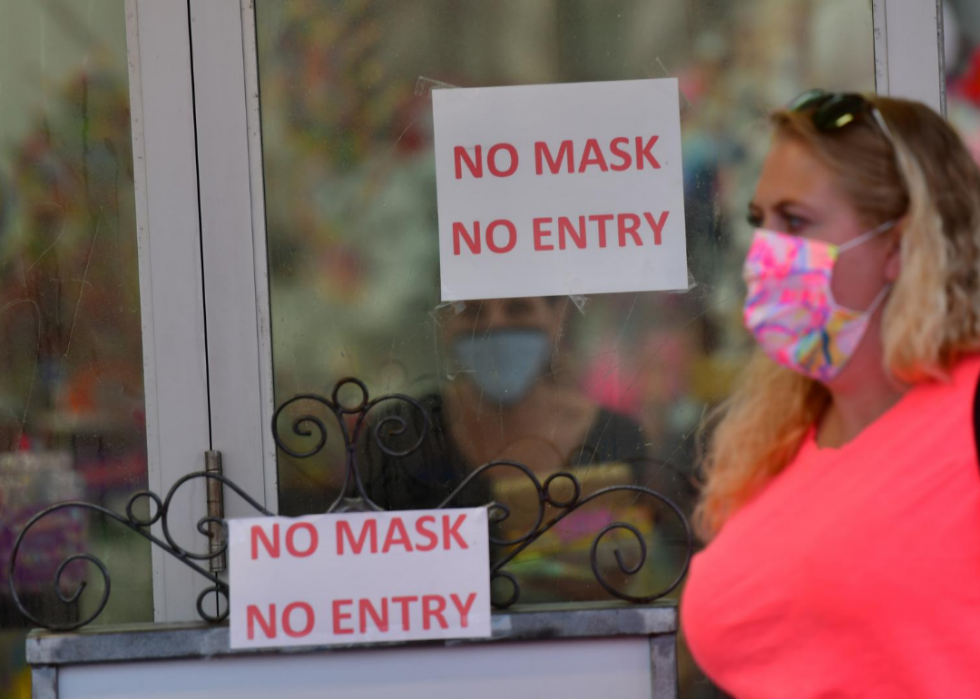
New Jersey
- State overall CCVI score: 0.46 (#24 least vulnerable among all states)
--- #1 area of vulnerability: Minority status and language (score: 0.90)
--- #2 area of vulnerability: Health care system factors (score: 0.62)
- #1 most vulnerable county: Cumberland County
--- County overall CCVI score: 0.95
--- #1 area of vulnerability: Epidemiological factors (score: 0.96)
--- #2 area of vulnerability: Minority status and language (score: 0.93)
- #2 most vulnerable county: Essex County
--- County overall CCVI score: 0.76
--- #1 area of vulnerability: Minority status and language (score: 0.96)
--- #2 area of vulnerability: Health care system factors (score: 0.88)
- #3 most vulnerable county: Salem County
--- County overall CCVI score: 0.67
--- #1 area of vulnerability: Health care system factors (score: 0.81)
--- #2 area of vulnerability: Epidemiological factors (score: 0.78)
Both Cumberland and Salem counties were labeled as "health care deserts" long before the COVID-19 pandemic, meaning they had a shortage of primary care physicians and nurses. In a 2019 County Health Rankings report by the Robert Wood Johnson Foundation and the University of Wisconsin Population Health Institute, Cumberland County received the designation of unhealthiest county in the state.
You may also like: 50 community resources to support Americans financially impacted by COVID-19
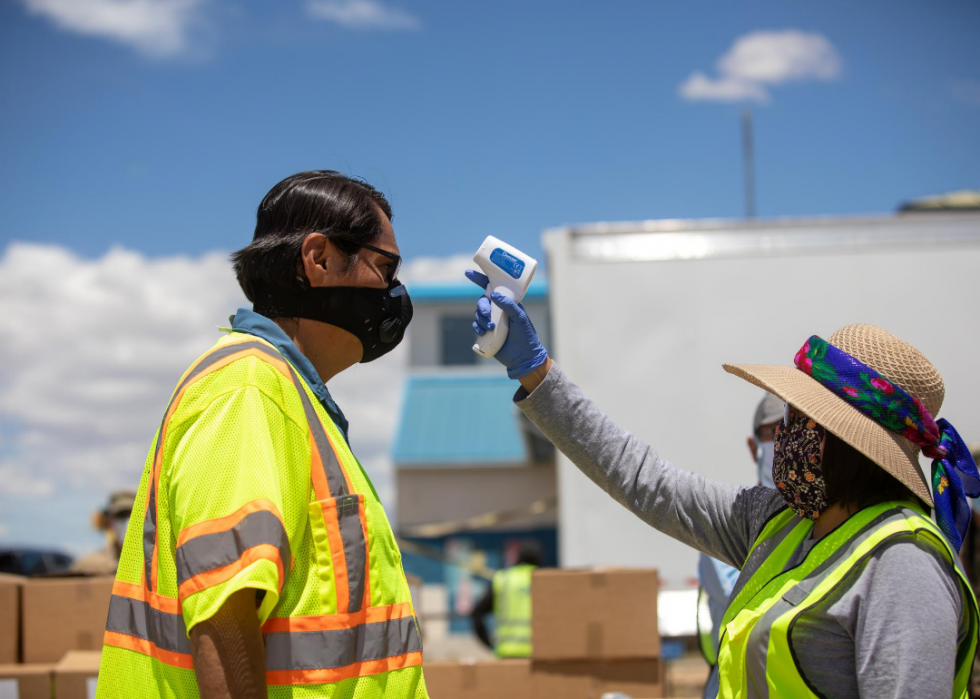
New Mexico
- State overall CCVI score: 0.88 (#7 most vulnerable among all states)
--- #1 area of vulnerability: Socioeconomic status (score: 0.98)
--- #2 area of vulnerability: Minority status and language (score: 0.94)
- #1 most vulnerable county: McKinley County
--- County overall CCVI score: 0.99
--- #1 area of vulnerability: Minority status and language (score: 0.98)
--- #2 area of vulnerability: Socioeconomic status (score: 0.98)
- #2 most vulnerable county: Guadalupe County
--- County overall CCVI score: 0.99
--- #1 area of vulnerability: Housing type and transportation (score: 0.98)
--- #2 area of vulnerability: Minority status and language (score: 0.97)
- #3 most vulnerable county: Luna County
--- County overall CCVI score: 0.98
--- #1 area of vulnerability: Minority status and language (score: 0.99)
--- #2 area of vulnerability: Socioeconomic status (score: 0.99)
With the highest poverty level in the state, and the highest second-joint poverty rate, shared with Louisiana, in the entire country, McKinley County had a vulnerable population well before the pandemic came along. McKinley also faces a high teen birth rate and a population facing overcrowded homes, often without indoor plumbing.
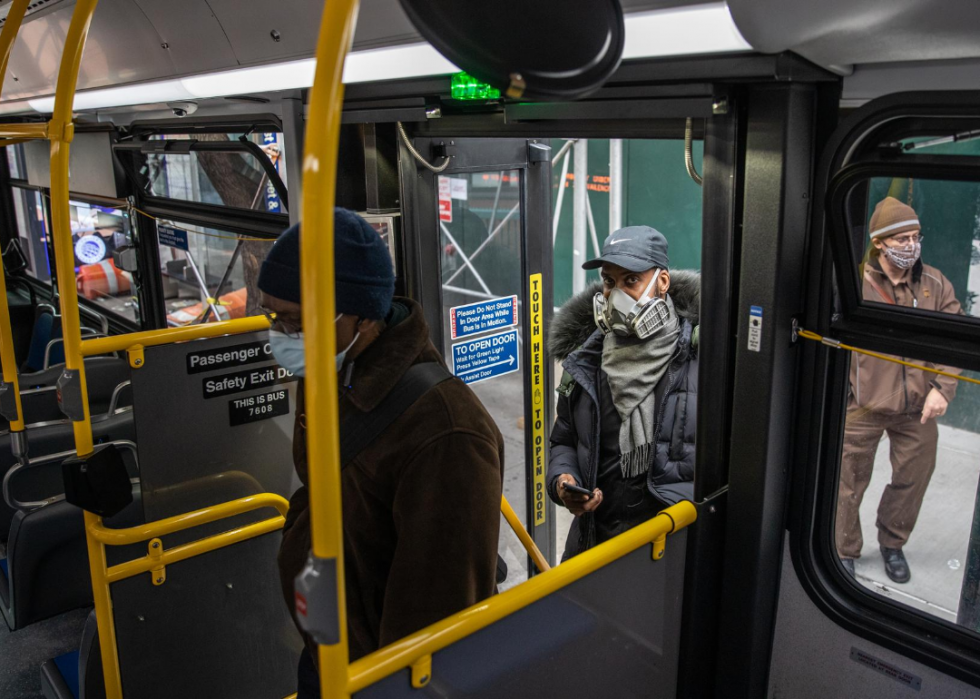
New York
- State overall CCVI score: 0.62 (#19 most vulnerable among all states)
--- #1 area of vulnerability: Housing type and transportation (score: 0.92)
--- #2 area of vulnerability: Minority status and language (score: 0.82)
- #1 most vulnerable county: Bronx County
--- County overall CCVI score: 0.97
--- #1 area of vulnerability: Minority status and language (score: 1)
--- #2 area of vulnerability: Housing type and transportation (score: 0.98)
- #2 most vulnerable county: Montgomery County
--- County overall CCVI score: 0.89
--- #1 area of vulnerability: Epidemiological factors (score: 0.99)
--- #2 area of vulnerability: Health care system factors (score: 0.84)
- #3 most vulnerable county: Fulton County
--- County overall CCVI score: 0.82
--- #1 area of vulnerability: Epidemiological factors (score: 1)
--- #2 area of vulnerability: Health care system factors (score: 0.79)
With long commute times and a heavy reliance on public transit, it is no wonder the population of Bronx County is vulnerable to COVID-19. Its residents also battle overcrowding, which leaves little space for social distancing or self-isolation for those infected or potentially infected with the virus.

North Carolina
- State overall CCVI score: 0.84 (#9 most vulnerable among all states)
--- #1 area of vulnerability: Health care system factors (score: 0.98)
--- #2 area of vulnerability: Socioeconomic status (score: 0.80)
- #1 most vulnerable county: Robeson County
--- County overall CCVI score: 0.99
--- #1 area of vulnerability: Health care system factors (score: 0.98)
--- #2 area of vulnerability: Socioeconomic status (score: 0.95)
- #2 most vulnerable county: Duplin County
--- County overall CCVI score: 0.99
--- #1 area of vulnerability: Health care system factors (score: 0.97)
--- #2 area of vulnerability: Socioeconomic status (score: 0.96)
- #3 most vulnerable county: Bladen County
--- County overall CCVI score: 0.99
--- #1 area of vulnerability: Health care system factors (score: 0.99)
--- #2 area of vulnerability: Housing type and transportation (score: 0.94)
High levels of childhood poverty have led to high levels of food insecurity in Robeson County. The county also ranks last in health care outcomes in the state, according to the 2018 County Health Rankings, published by the Robert Wood Johnson Foundation in partnership with the University of Wisconsin Population Health Institute. Those with limited access to health care, high disease prevalence, and extreme levels of poverty face increased risk during the COVID-19 pandemic.

North Dakota
- State overall CCVI score: 0.06 (#4 least vulnerable among all states)
--- #1 area of vulnerability: Housing type and transportation (score: 0.94)
--- #2 area of vulnerability: Health care system factors (score: 0.46)
- #1 most vulnerable county: Rolette County
--- County overall CCVI score: 1
--- #1 area of vulnerability: Housing type and transportation (score: 0.99)
--- #2 area of vulnerability: Household composition and disability (score: 0.98)
- #2 most vulnerable county: Sioux County
--- County overall CCVI score: 0.92
--- #1 area of vulnerability: Housing type and transportation (score: 0.99)
--- #2 area of vulnerability: Socioeconomic status (score: 0.99)
- #3 most vulnerable county: Benson County
--- County overall CCVI score: 0.77
--- #1 area of vulnerability: Household composition and disability (score: 0.79)
--- #2 area of vulnerability: Socioeconomic status (score: 0.79)
With a childhood poverty rate double that of the national rate, Rolette County also has a high percentage of single-parent households. As schools reopen, single parents face the many burdens brought on by the pandemic. This vulnerable community bears the continued impact of COVID-19 as it tries to parent, provide, and educate the children.
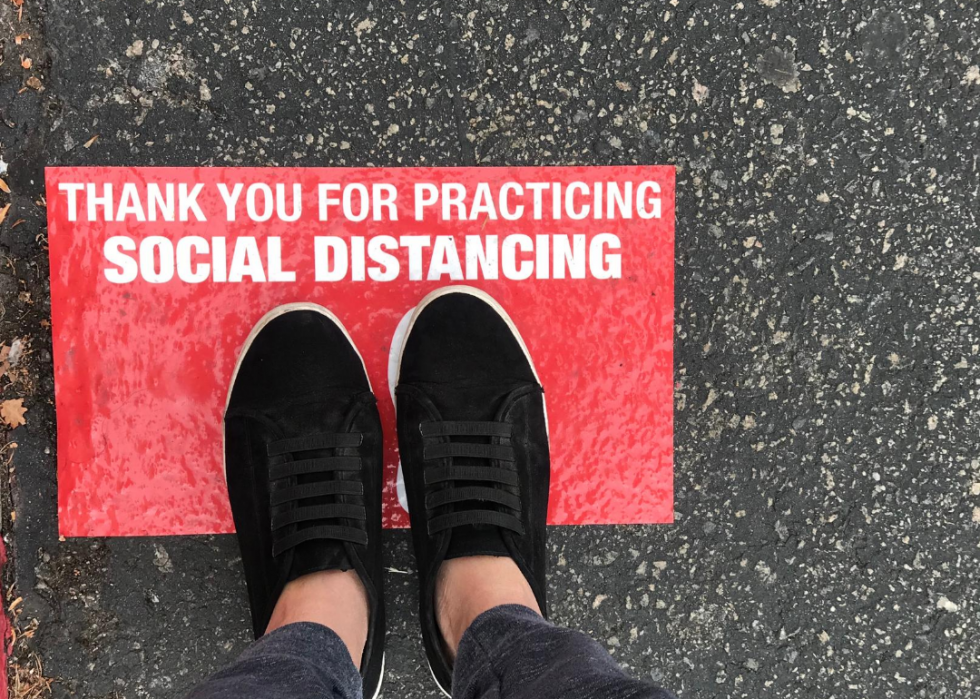
Ohio
- State overall CCVI score: 0.40 (#21 least vulnerable among all states)
--- #1 area of vulnerability: Epidemiological factors (score: 0.86)
--- #2 area of vulnerability: Household composition and disability (score: 0.74)
- #1 most vulnerable county: Lawrence County
--- County overall CCVI score: 0.72
--- #1 area of vulnerability: Epidemiological factors (score: 0.96)
--- #2 area of vulnerability: Household composition and disability (score: 0.91)
- #2 most vulnerable county: Ashtabula County
--- County overall CCVI score: 0.72
--- #1 area of vulnerability: Socioeconomic status (score: 0.75)
--- #2 area of vulnerability: Epidemiological factors (score: 0.75)
- #3 most vulnerable county: Meigs County
--- County overall CCVI score: 0.70
--- #1 area of vulnerability: Household composition and disability (score: 0.88)
--- #2 area of vulnerability: Socioeconomic status (score: 0.87)
While smoking rates have dropped to under 14% in the United States, just under a quarter of Lawrence County's population smokes. Not only is smoking linked to unfavorable health outcomes, but findings published in Nicotine and Tobacco Research found a modest increase in the risk for severe disease for hospitalized COVID-19 patients who smoke.
You may also like: Companies that are hiring during COVID-19

Oklahoma
- State overall CCVI score: 0.94 (#4 most vulnerable among all states)
--- #1 area of vulnerability: Health care system factors (score: 0.96)
--- #2 area of vulnerability: Household composition and disability (score: 0.94)
- #1 most vulnerable county: Harmon County
--- County overall CCVI score: 0.99
--- #1 area of vulnerability: Household composition and disability (score: 0.99)
--- #2 area of vulnerability: Health care system factors (score: 0.98)
- #2 most vulnerable county: Tillman County
--- County overall CCVI score: 0.99
--- #1 area of vulnerability: Health care system factors (score: 0.97)
--- #2 area of vulnerability: Minority status and language (score: 0.94)
- #3 most vulnerable county: Adair County
--- County overall CCVI score: 0.99
--- #1 area of vulnerability: Health care system factors (score: 0.98)
--- #2 area of vulnerability: Household composition and disability (score: 0.96)
In the Oklahoma 2017 State of the State Report, Harmon and Tillman counties received a failing grade when it came to health insurance. Both counties have a high percentage of residents without health insurance coverage. The impact of COVID-19 will be much greater for uninsured and underinsured populations according to a June study in the Journal of General Internal Medicine.

Oregon
- State overall CCVI score: 0.66 (#18 most vulnerable among all states)
--- #1 area of vulnerability: Housing type and transportation (score: 0.96)
--- #2 area of vulnerability: Socioeconomic status (score: 0.64)
- #1 most vulnerable county: Morrow County
--- County overall CCVI score: 0.85
--- #1 area of vulnerability: Minority status and language (score: 0.94)
--- #2 area of vulnerability: Housing type and transportation (score: 0.94)
- #2 most vulnerable county: Jefferson County
--- County overall CCVI score: 0.82
--- #1 area of vulnerability: Socioeconomic status (score: 0.80)
--- #2 area of vulnerability: Minority status and language (score: 0.80)
- #3 most vulnerable county: Lake County
--- County overall CCVI score: 0.81
--- #1 area of vulnerability: Housing type and transportation (score: 0.97)
--- #2 area of vulnerability: Household composition and disability (score: 0.81)
From a resident age standpoint, the state of Oregon ranks just below the top 10 oldest states at #11, and in Lake County, one in five residents is 65 and older. According to the Oregon Office on Disability and Health, 33.62% of Lake County residents are disabled adults. Both of these populations, the elderly and the disabled, face heightened risk during COVID-19.

Pennsylvania
- State overall CCVI score: 0.28 (#15 least vulnerable among all states)
--- #1 area of vulnerability: Epidemiological factors (score: 0.68)
--- #2 area of vulnerability: Household composition and disability (score: 0.52)
- #1 most vulnerable county: Philadelphia County
--- County overall CCVI score: 0.75
--- #1 area of vulnerability: Minority status and language (score: 0.93)
--- #2 area of vulnerability: Epidemiological factors (score: 0.93)
- #2 most vulnerable county: Monroe County
--- County overall CCVI score: 0.64
--- #1 area of vulnerability: Epidemiological factors (score: 0.97)
--- #2 area of vulnerability: Minority status and language (score: 0.79)
- #3 most vulnerable county: Cameron County
--- County overall CCVI score: 0.58
--- #1 area of vulnerability: Housing type and transportation (score: 0.75)
--- #2 area of vulnerability: Epidemiological factors (score: 0.74)
Philadelphia County has a high rate of violent crime that has increased in 2020. Researchers believe there is a correlation between high COVID-19 rates and gun violence, and that the economic disparity residents face during the pandemic is a contributing factor in Philadelphia, the largest city in the county. With a large minority population and high cancer and heart disease death rates, this county’s population struggles even more during COVID-19.

Rhode Island
- State overall CCVI score: 0.24 (#13 least vulnerable among all states)
--- #1 area of vulnerability: Minority status and language (score: 0.54)
--- #2 area of vulnerability: Socioeconomic status (score: 0.52)
- #1 most vulnerable county: Providence County
--- County overall CCVI score: 0.37
--- #1 area of vulnerability: Minority status and language (score: 0.87)
--- #2 area of vulnerability: Socioeconomic status (score: 0.52)
- #2 most vulnerable county: Washington County
--- County overall CCVI score: 0.06
--- #1 area of vulnerability: Epidemiological factors (score: 0.95)
--- #2 area of vulnerability: Minority status and language (score: 0.30)
- #3 most vulnerable county: Kent County
--- County overall CCVI score: 0.05
--- #1 area of vulnerability: Minority status and language (score: 0.48)
--- #2 area of vulnerability: Epidemiological factors (score: 0.31)
The growing Latino population at both the state and county level have been disproportionately affected by COVID-19. But Latino residents in Providence County are not alone. Hispanic populations across the country struggle financially with staggering levels of job loss and pay cuts due to the pandemic, according to the Pew Research Center.

South Carolina
- State overall CCVI score: 0.82 (#10 most vulnerable among all states)
--- #1 area of vulnerability: Socioeconomic status (score: 0.86)
--- #2 area of vulnerability: Household composition and disability (score: 0.84)
- #1 most vulnerable county: Marlboro County
--- County overall CCVI score: 0.99
--- #1 area of vulnerability: Socioeconomic status (score: 0.98)
--- #2 area of vulnerability: Health care system factors (score: 0.92)
- #2 most vulnerable county: Bamberg County
--- County overall CCVI score: 0.99
--- #1 area of vulnerability (tie): Household composition and disability (score: 0.97)
--- #1 area of vulnerability (tie): Household composition and disability (score: 0.97)
- #3 most vulnerable county: Allendale County
--- County overall CCVI score: 0.99
--- #1 area of vulnerability: Housing type and transportation (score: 0.98)
--- #2 area of vulnerability: Socioeconomic status (score: 0.98)
Its status as a high-poverty county creates vulnerability in Marlboro. The one hospital in the county closed in April 2015, which has made it especially difficult during the COVID-19 pandemic. Rural communities facing poverty and that lack adequate health care are at a particular disadvantage during disasters.
You may also like: Metros where small businesses have been most impacted by COVID-19

South Dakota
- State overall CCVI score: 0.20 (#11 least vulnerable among all states)
--- #1 area of vulnerability: Housing type and transportation (score: 0.90)
--- #2 area of vulnerability: Household composition and disability (score: 0.68)
- #1 most vulnerable county: Todd County
--- County overall CCVI score: 1
--- #1 area of vulnerability: Socioeconomic status (score: 1)
--- #2 area of vulnerability: Housing type and transportation (score: 0.99)
- #2 most vulnerable county: Buffalo County
--- County overall CCVI score: 0.97
--- #1 area of vulnerability: Socioeconomic status (score: 1)
--- #2 area of vulnerability: Housing type and transportation (score: 0.99)
- #3 most vulnerable county: Mellette County
--- County overall CCVI score: 0.97
--- #1 area of vulnerability: Housing type and transportation (score: 0.99)
--- #2 area of vulnerability: Socioeconomic status (score: 0.99)
In Todd County, 88.6% of the residents are Native Americans. The county also has staggering poverty rates, making this population vulnerable to the economic disparities of the COVID-19 virus. Native Americans also experience health disparities surrounding the virus.
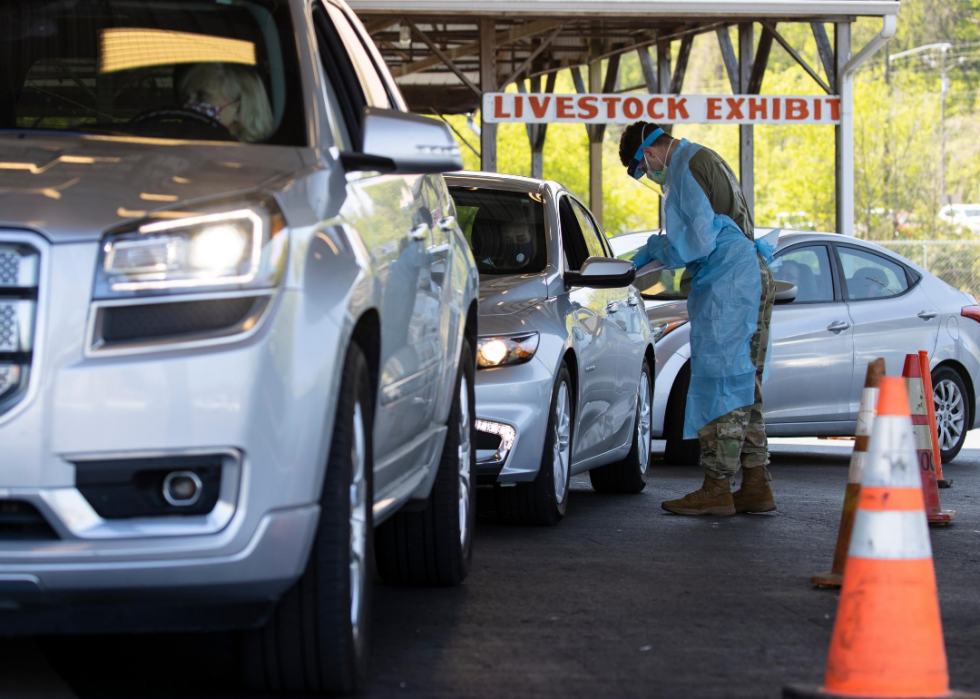
Tennessee
- State overall CCVI score: 0.76 (#13 most vulnerable among all states)
--- #1 area of vulnerability: Epidemiological factors (score: 0.94)
--- #2 area of vulnerability: Socioeconomic status (score: 0.82)
- #1 most vulnerable county: Lake County
--- County overall CCVI score: 0.98
--- #1 area of vulnerability: Housing type and transportation (score: 0.99)
--- #2 area of vulnerability: Socioeconomic status (score: 0.98)
- #2 most vulnerable county: Haywood County
--- County overall CCVI score: 0.94
--- #1 area of vulnerability: Epidemiological factors (score: 0.98)
--- #2 area of vulnerability: Socioeconomic status (score: 0.84)
- #3 most vulnerable county: Hardeman County
--- County overall CCVI score: 0.94
--- #1 area of vulnerability: Socioeconomic status (score: 0.97)
--- #2 area of vulnerability: Epidemiological factors (score: 0.90)
A rural community in West Tennessee, Haywood County does not have access to a hospital. In June 2014, Haywood Park Community Hospital closed and left residents with a long ambulance ride to the nearest hospital, creating a rural health care crisis well before the COVID-19 pandemic and leaving a whole county vulnerable to the virus.
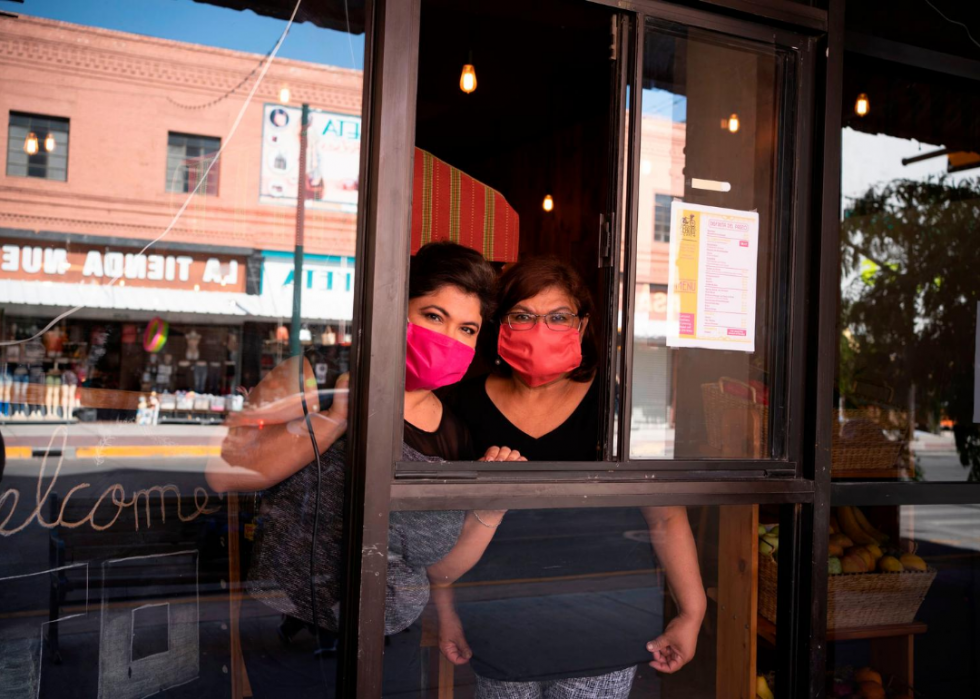
Texas
- State overall CCVI score: 0.48 (#25 least vulnerable among all states)
--- #1 area of vulnerability: Minority status and language (score: 0.96)
--- #2 area of vulnerability: Socioeconomic status (score: 0.72)
- #1 most vulnerable county: Brooks County
--- County overall CCVI score: 1
--- #1 area of vulnerability: Minority status and language (score: 0.99)
--- #2 area of vulnerability: Household composition and disability (score: 0.99)
- #2 most vulnerable county: Culberson County
--- County overall CCVI score: 0.99
--- #1 area of vulnerability: Household composition and disability (score: 1)
--- #2 area of vulnerability: Housing type and transportation (score: 0.99)
- #3 most vulnerable county: Hardeman County
--- County overall CCVI score: 0.98
--- #1 area of vulnerability: Household composition and disability (score: 0.93)
--- #2 area of vulnerability: Minority status and language (score: 0.93)
Brooks County has long had issues with undocumented immigrants and the climate has grown even more precarious with the arrival of the COVID-19 virus. More than 90% of Brooks County's population is Hispanic and faces crippling levels of poverty. This vulnerable group also has overcrowded homes, many without vehicles, which makes getting to jobs and access to health care all the more difficult during the pandemic.

Utah
- State overall CCVI score: 0.18 (#10 least vulnerable among all states)
--- #1 area of vulnerability: Health care system factors (score: 0.82)
--- #2 area of vulnerability: Minority status and language (score: 0.48)
- #1 most vulnerable county: San Juan County
--- County overall CCVI score: 0.82
--- #1 area of vulnerability: Housing type and transportation (score: 0.97)
--- #2 area of vulnerability: Household composition and disability (score: 0.96)
- #2 most vulnerable county: Garfield County
--- County overall CCVI score: 0.68
--- #1 area of vulnerability: Housing type and transportation (score: 0.74)
--- #2 area of vulnerability: Health care system factors (score: 0.67)
- #3 most vulnerable county: Carbon County
--- County overall CCVI score: 0.67
--- #1 area of vulnerability: Housing type and transportation (score: 0.87)
--- #2 area of vulnerability: Health care system factors (score: 0.83)
The entire state of Utah has an ongoing physician shortage. Both Garfield and Carbon counties consider this as a disadvantage when it comes to managing the COVID-19 pandemic. Doctor shortages mean longer wait times for appointments and testing.

Vermont
- State overall CCVI score: 0.02 (#2 least vulnerable among all states)
--- #1 area of vulnerability: Housing type and transportation (score: 0.76)
--- #2 area of vulnerability: Household composition and disability (score: 0.38)
- #1 most vulnerable county: Orleans County
--- County overall CCVI score: 0.59
--- #1 area of vulnerability: Epidemiological factors (score: 0.88)
--- #2 area of vulnerability: Household composition and disability (score: 0.74)
- #2 most vulnerable county: Franklin County
--- County overall CCVI score: 0.33
--- #1 area of vulnerability: Epidemiological factors (score: 0.82)
--- #2 area of vulnerability: Housing type and transportation (score: 0.42)
- #3 most vulnerable county: Essex County
--- County overall CCVI score: 0.29
--- #1 area of vulnerability: Household composition and disability (score: 0.74)
--- #2 area of vulnerability: Socioeconomic status (score: 0.60)
Essex County has a significant elderly population as does the entire state, which counts 18.7% of the population as 65 and older. The county also has the highest poverty level in the state and senior poverty levels in Essex County are 25% higher than those of the nation. This combination makes Essex County residents particularly vulnerable to the COVID-19 virus and the issues it brings to low-income seniors.
You may also like: 20 ways COVID-19 is impacting children around the world
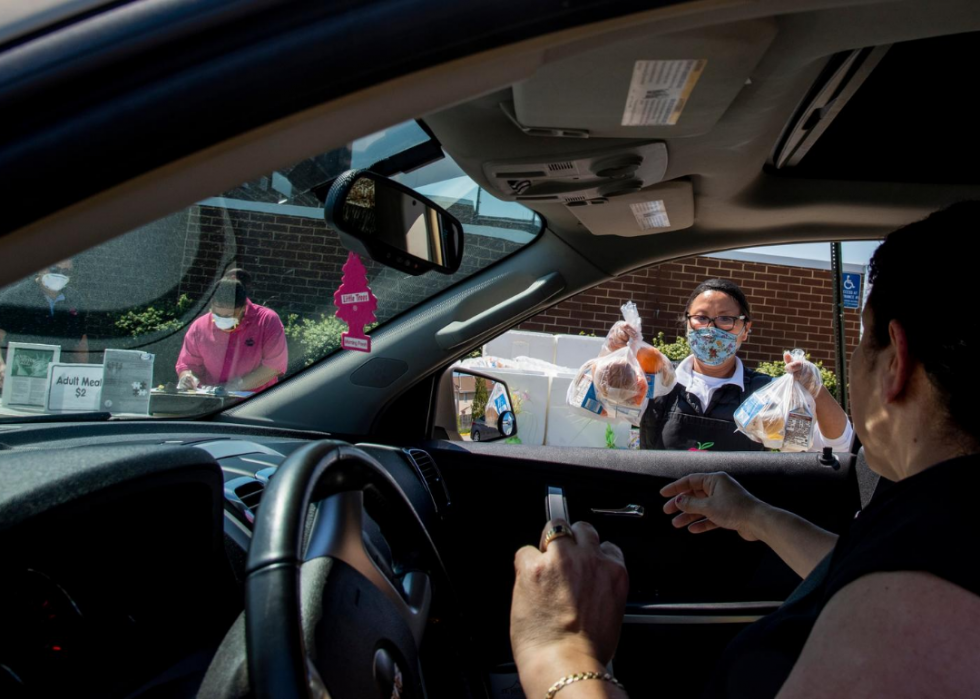
Virginia
- State overall CCVI score: 0.22 (#12 least vulnerable among all states)
--- #1 area of vulnerability: Minority status and language (score: 0.66)
--- #2 area of vulnerability: Health care system factors (score: 0.42)
- #1 most vulnerable county: Emporia City County
--- County overall CCVI score: 1
--- #1 area of vulnerability: Socioeconomic status (score: 0.99)
--- #2 area of vulnerability: Epidemiological factors (score: 0.94)
- #2 most vulnerable county: Petersburg City County
--- County overall CCVI score: 0.98
--- #1 area of vulnerability: Epidemiological factors (score: 0.99)
--- #2 area of vulnerability: Minority status and language (score: 0.91)
- #3 most vulnerable county: Galax City County
--- County overall CCVI score: 0.97
--- #1 area of vulnerability (tie): Household composition and disability (score: 0.99)
--- #1 area of vulnerability (tie): Household composition and disability (score: 0.99)
With a low median household income and a high level of poverty, Emporia City County is vulnerable to the economic disadvantages the nation’s poorer communities face due to COVID-19. Both Emporia City and Petersburg City counties ranked in the five unhealthiest counties in the state of Virginia.
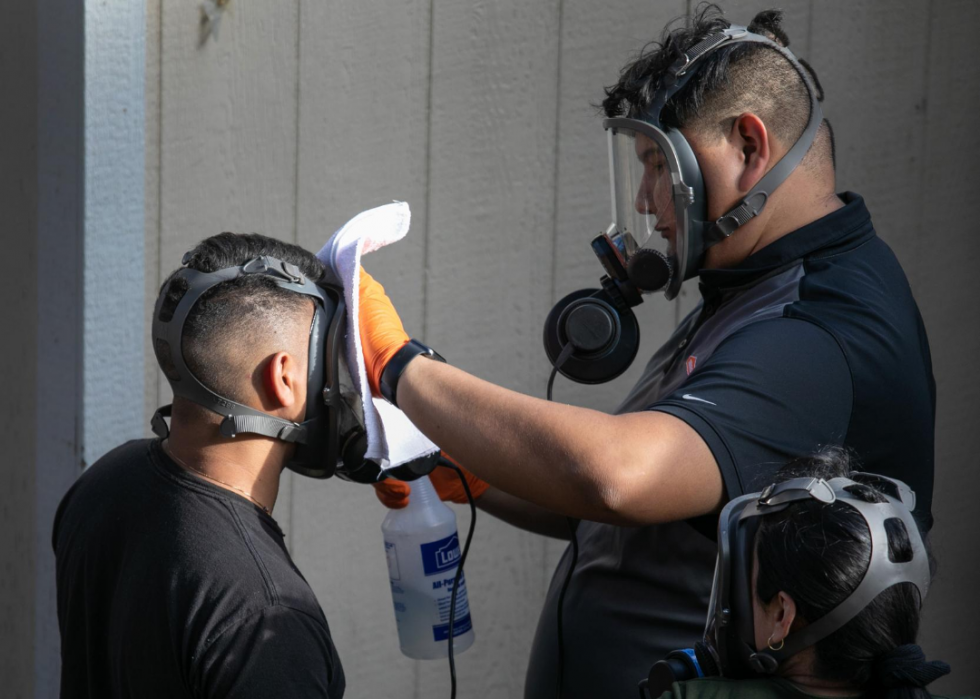
Washington
- State overall CCVI score: 0.32 (#17 least vulnerable among all states)
--- #1 area of vulnerability: Housing type and transportation (score: 0.84)
--- #2 area of vulnerability: Minority status and language (score: 0.76)
- #1 most vulnerable county: Grant County
--- County overall CCVI score: 0.85
--- #1 area of vulnerability: Minority status and language (score: 0.95)
--- #2 area of vulnerability: Housing type and transportation (score: 0.92)
- #2 most vulnerable county: Adams County
--- County overall CCVI score: 0.76
--- #1 area of vulnerability: Minority status and language (score: 0.98)
--- #2 area of vulnerability: Housing type and transportation (score: 0.94)
- #3 most vulnerable county: Douglas County
--- County overall CCVI score: 0.75
--- #1 area of vulnerability: Household composition and disability (score: 0.95)
--- #2 area of vulnerability: Minority status and language (score: 0.93)
Adams County has a large Hispanic population as well as a high percentage of non-English speaking residents. This creates a double whammy when it comes to COVID-19. Not only are Latino communities hit harder by the health effects of the virus, but non-English speakers face language barriers that make it more difficult to receive adequate care.

West Virginia
- State overall CCVI score: 0.90 (#6 most vulnerable among all states)
--- #1 area of vulnerability (tie): Socioeconomic status (score: 0.96)
--- #1 area of vulnerability (tie): Household composition and disability (score: 0.96)
--- #1 area of vulnerability (tie): Epidemiological factors (score: 0.96)
- #1 most vulnerable county: Logan County
--- County overall CCVI score: 0.91
--- #1 area of vulnerability: Socioeconomic status (score: 0.94)
--- #2 area of vulnerability: Epidemiological factors (score: 0.92)
- #2 most vulnerable county: Mingo County
--- County overall CCVI score: 0.90
--- #1 area of vulnerability: Socioeconomic status (score: 0.99)
--- #2 area of vulnerability: Epidemiological factors (score: 0.91)
- #3 most vulnerable county: Clay County
--- County overall CCVI score: 0.89
--- #1 area of vulnerability: Socioeconomic status (score: 0.94)
--- #2 area of vulnerability: Epidemiological factors (score: 0.88)
Mingo County has the second-highest poverty rate in the state. The only hospital in the county closed its doors in May, another victim of the rural health care crisis that began a decade before the pandemic. Since 2010, 131 rural hospitals have closed across the country adding to the vulnerability of remote, poor populations especially since the COVID-19 crisis.

Wisconsin
- State overall CCVI score: 0.08 (#5 least vulnerable among all states)
--- #1 area of vulnerability: Housing type and transportation (score: 0.44)
--- #2 area of vulnerability: Health care system factors (score: 0.36)
- #1 most vulnerable county: Menominee County
--- County overall CCVI score: 0.94
--- #1 area of vulnerability: Household composition and disability (score: 0.97)
--- #2 area of vulnerability: Housing type and transportation (score: 0.95)
- #2 most vulnerable county: Clark County
--- County overall CCVI score: 0.86
--- #1 area of vulnerability: Housing type and transportation (score: 0.96)
--- #2 area of vulnerability: Epidemiological factors (score: 0.87)
- #3 most vulnerable county: Forest County
--- County overall CCVI score: 0.63
--- #1 area of vulnerability: Household composition and disability (score: 0.88)
--- #2 area of vulnerability: Housing type and transportation (score: 0.81)
Menominee County has a high rate of single-parent households and a high percentage of people under 18. The COVID-19 crisis has shone a light on the inequalities single-parents face, especially those living below the poverty line, which is the case for 26.5% of Menominee’s population.

Wyoming
- State overall CCVI score: 0.16 (#9 least vulnerable among all states)
--- #1 area of vulnerability: Housing type and transportation (score: 0.80)
--- #2 area of vulnerability: Household composition and disability (score: 0.58)
- #1 most vulnerable county: Johnson County
--- County overall CCVI score: 0.55
--- #1 area of vulnerability: Epidemiological factors (score: 0.89)
--- #2 area of vulnerability: Housing type and transportation (score: 0.71)
- #2 most vulnerable county: Washakie County
--- County overall CCVI score: 0.53
--- #1 area of vulnerability: Household composition and disability (score: 0.76)
--- #2 area of vulnerability: Housing type and transportation (score: 0.75)
- #3 most vulnerable county: Big Horn County
--- County overall CCVI score: 0.50
--- #1 area of vulnerability: Household composition and disability (score: 0.79)
--- #2 area of vulnerability: Health care system factors (score: 0.71)
A large percentage of Big Horn County's population doesn't have health care insurance. The remoteness of this rural community also leaves residents in the county and state with access to fewer primary care physicians. WalletHub reported that the state came in second to last in ranking for its number of doctors per capita.
You may also like: Essential COVID-19 stats: Where testing, case counts, and outbreaks stand in your state



